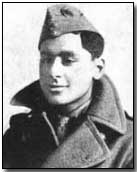Related Research Articles

Indra Lal Roy was the sole Indian World War I flying ace. While serving in the Royal Flying Corps and its successor, the Royal Air Force, he claimed ten aerial victories; five aircraft destroyed, and five 'down out of control' in just over 170 hours flying time, making him the first Indian flying ace.
Frank Ormond "Mongoose" Soden DFC & Bar was a First World War flying ace and RAF commander during the Second World War.
Captain William Otway Boger was a Canadian World War I flying ace credited with five aerial victories.
Lieutenant Robert McLaughlin was a British World War I flying ace credited with six aerial victories.
Lieutenant Archibald Buchanan was a World War I flying ace credited with seven aerial victories.
Captain Thomas Walter Nash was a British World War I flying ace credited with eight aerial victories.
Wing Commander Edwin Swale was an English First World War flying ace credited with 17 aerial victories. His victory list is notable because he scored 14 of his 17 wins against the premier German fighter of the war, the Fokker D.VII, and became the leading Sopwith Camel ace of No. 210 Squadron RAF.
Brigadier Charles Gordon Ross was a career soldier who served in both the Royal Air Force and the South African Air Force. He was a quadruple ace, being credited with 20 victories during World War I.
Captain Reginald Carey Brenton Brading was a British World War I flying ace credited with thirteen confirmed aerial victories.
Captain John Ellis Langford Hunter was a British World War I flying ace credited with 13 confirmed aerial victories.
Second Lieutenant Francis James Ralph was a British World War I ace credited with 13 confirmed aerial victories over German fighter aircraft while flying as an aerial observer.
Captain William Stanley Jenkins was a Canadian flying ace during World War I. He was officially credited with 12 aerial victories, having scored his first two while still on sick leave.
Captain Roy Manzer, was a Canadian World War I flying ace credited with 12 official aerial victories. After his aerial military service, he returned to Canada and a long and distinguished legal and civic career.
Roby Lewis Manuel, with Bar, was an Australian flying ace of the First World War credited with 12 official aerial victories. He led the Anzac Day flyby in London in 1919. When World War II erupted, Manuel joined the Royal Australian Air Force and once again served his nation.
Group Captain Norman William Reginald Mawle was a British World War I flying ace. He was credited with 12 official aerial victories during the First World War. During World War II, he returned to his country's service, not retiring until 1954.
Captain Alfred William Saunders was an Irish flying ace of the First World War, credited with twelve aerial victories. He remained in the RAF post-war, serving until 1927.
Captain Adrian James Boswell Tonks was a British First World War flying ace. He was officially credited with twelve aerial victories, and was twice awarded the Distinguished Flying Cross.
Captain Alexander Beck was an Anglo-Argentine aviator during World War I. He was an underage enlistee who went on to become a flying ace credited with 11 official aerial victories.
Lieutenant Malcolm Plaw MacLeod (1897-1960) was a Canadian flying ace. He was credited with seven aerial victories scored during the closing days of World War I. He then returned to Canada to complete his education and work as a stockbroker until World War II, when he served in the Royal Canadian Air Force for the war's duration.

Captain William John MacKenzie was an American flying ace who served with British naval aviation during World War I. He was one of the combatants in Manfred von Richthofen's last fight, being wounded in action. He was awarded the Distinguished Flying Cross, and the Croix de Guerre for his valor. He survived the war and was discharged in 1919. His history after 1942 is unknown.
References
- 1 2 "William Irwin - Attestation". The Aerodrome. Retrieved 5 February 2018.
- 1 2 3 4 5 6 7 8 9 "William Roy Irwin". Canada Veterans Hall of Valour. Retrieved 5 February 2018.
- ↑ "No. 30425". The London Gazette (Supplement). 13 December 1917. p. 13030.
- ↑ "No. 30496". The London Gazette (Supplement). 26 January 1918. p. 1355.
- 1 2 3 4 "William Irwin". The Aerodrome. Retrieved 5 February 2018.
- ↑ (Flight, 7 November 1918) http://www.flightglobal.com/pdfarchive/view/1918/1918%20-%201248.html?search=William%20Roy%20Irwin Retrieved 8 April 2011.
- ↑ "No. 31046". The London Gazette (Supplement). 3 December 1918. p. 14316.
- ↑ "No. 31598". The London Gazette . 14 October 1919. pp. 12655, 12657.
- ↑ "Jon Nichols/Kathrine Lee Troyer". www.sandycline.com. Retrieved 12 April 2011.
- ↑ "No. 36310". The London Gazette (Supplement). 1 January 1944. p. 52.
- ↑ http://www.otc-cta.gc.ca/doc.php?did=18&lang=eng Note: End date of his service was probably actually his death date, 14 January 1969. Retrieved 12 April 2011.